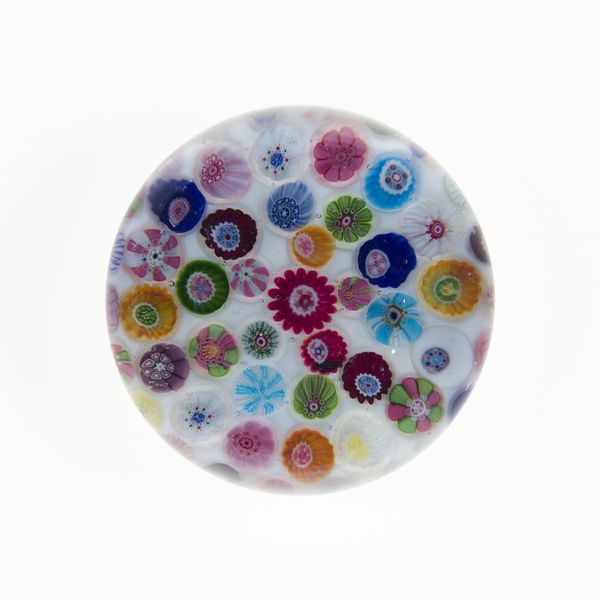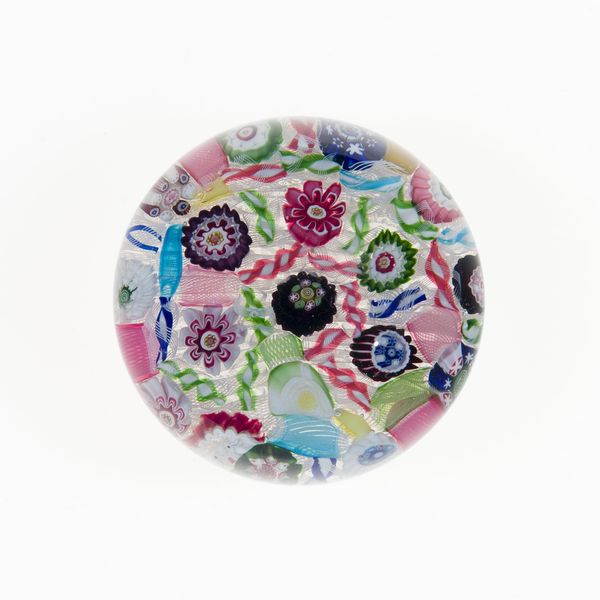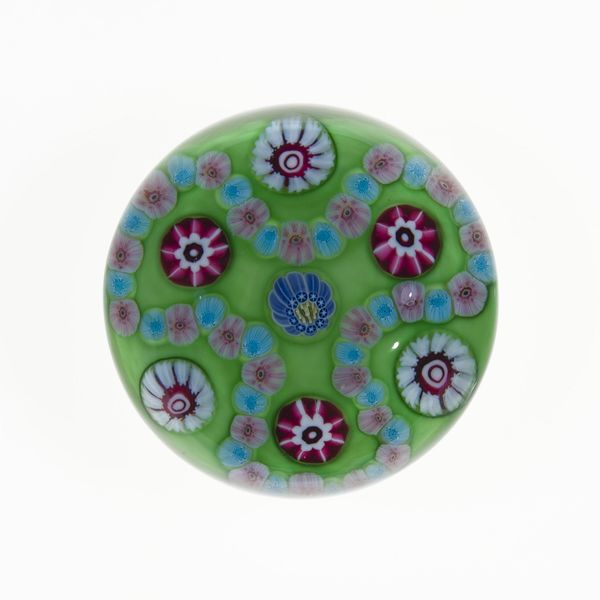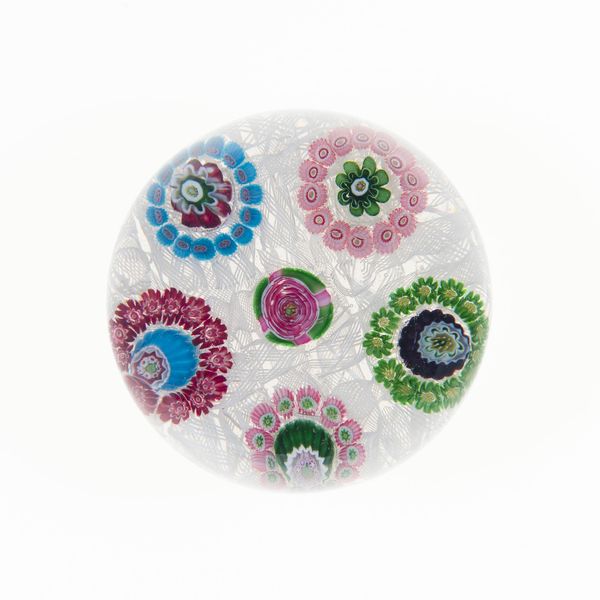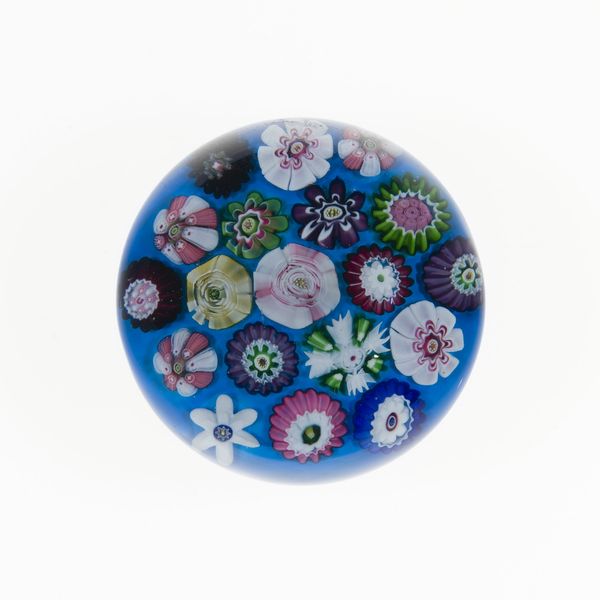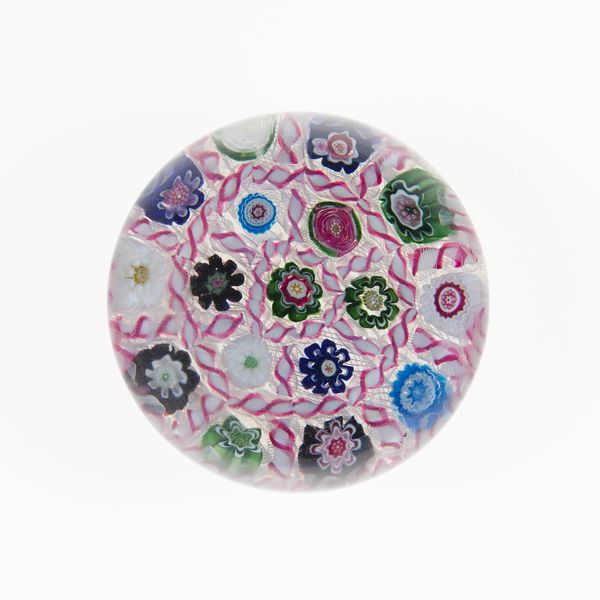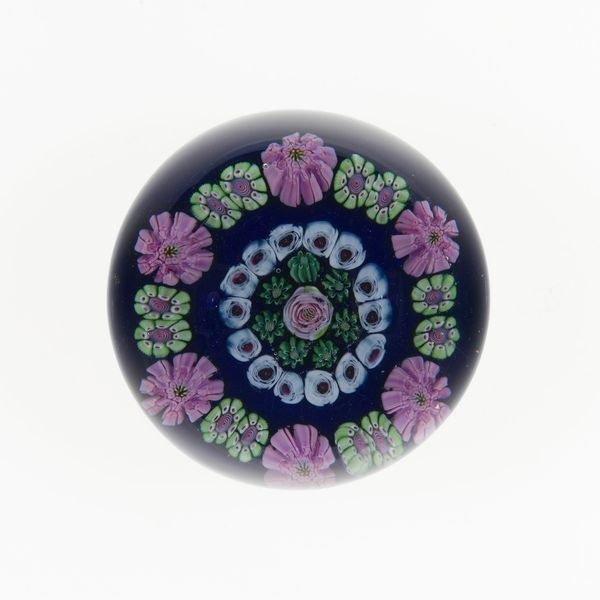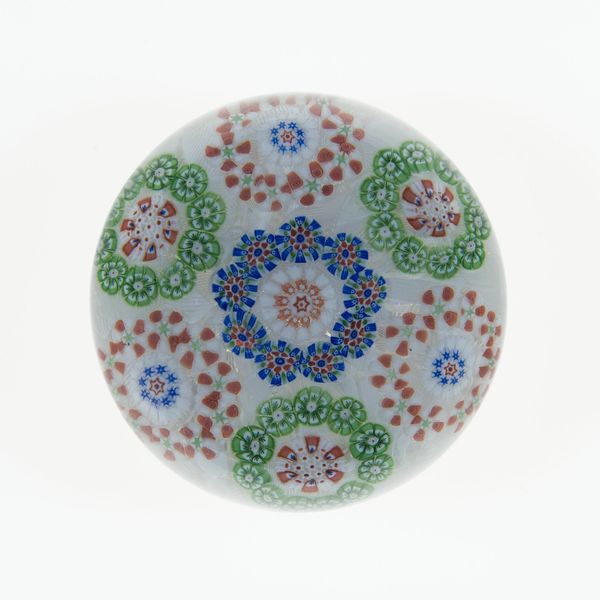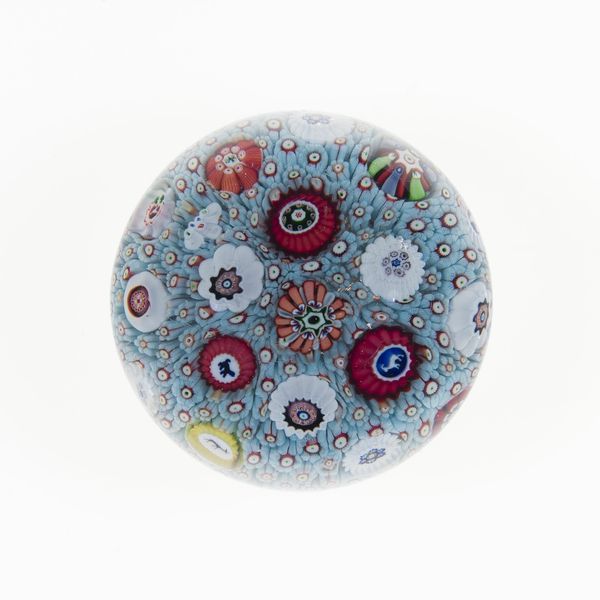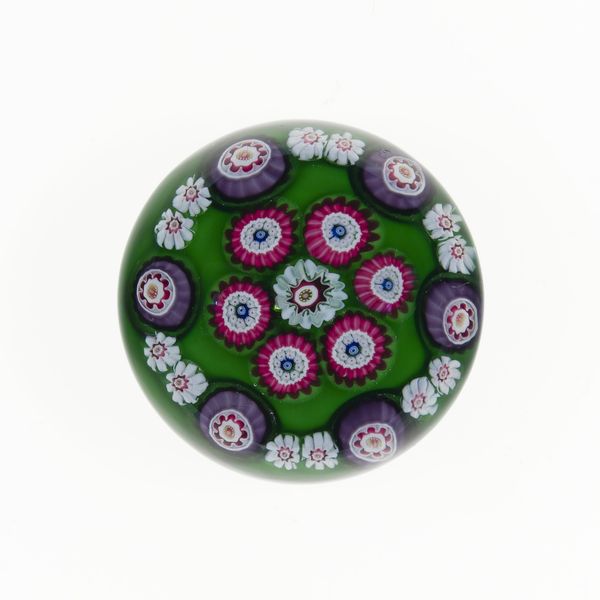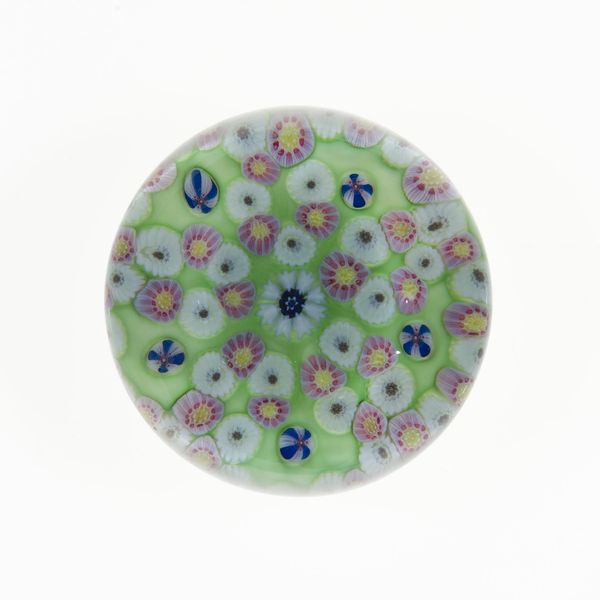
paper, glass
#
paper
#
glass
#
geometric
#
decorative-art
Dimensions: Diam. 7.7 cm (3 1/16 in.)
Copyright: Public Domain
Curator: Welcome. Before us, we have a captivating paperweight created by the Clichy Glasshouse, circa 1845-1860. It's a superb example of decorative art from that era. Editor: It’s mesmerizing! The intricate floral patterns trapped within the glass are almost dreamlike. The colors are delicate—pale pinks, blues, and a vibrant green center. It feels…contained, yet expansive, simultaneously. Curator: Indeed. Paperweights such as this became popular in the mid-19th century as decorative objects. The Clichy Glasshouse, along with other French and Italian glassmakers, developed sophisticated techniques to create these miniature worlds. This paperweight is crafted using lampwork and millefiori techniques. Editor: Can you elaborate on that process and the cultural moment in which this kind of craft rose to popularity? How might women’s domestic labor of the period be tied to an interest in miniature decoration such as this? Curator: Certainly. Lampwork involves shaping glass using a torch, while millefiori—Italian for "thousand flowers"—uses glass rods fused together to create intricate patterns that are then sliced and arranged. These weights coincided with a burgeoning middle class that was newly interested in, and could afford, fashionable domestic display items such as this. As for gender dynamics, these were marketed as elegant and attractive objects that may have appealed to, and would have been displayed by, the lady of the house. Editor: Considering this cultural context makes the art even more evocative. Do you see an aspect of the domestic space contained within it, reflected in its symmetrical, almost claustrophobic design? Curator: Perhaps so. Though it’s small, it demanded high skill. A highly regulated society might result in highly wrought production of glass. But there may be a tension with that thought – that a paperweight, designed to hold documents and potentially resist the progress of knowledge in some manner, displays, here, a kind of flowery freedom. Editor: Right. It's easy to see it simply as a pretty object, but when we consider its historical context and gendered space within that period, a different image emerges: it’s art that’s capable of multiple kinds of readings. Thanks for illuminating this. Curator: My pleasure. Hopefully, by looking more closely we realize the object embodies more than what initially meets the eye.
Comments
No comments
Be the first to comment and join the conversation on the ultimate creative platform.
